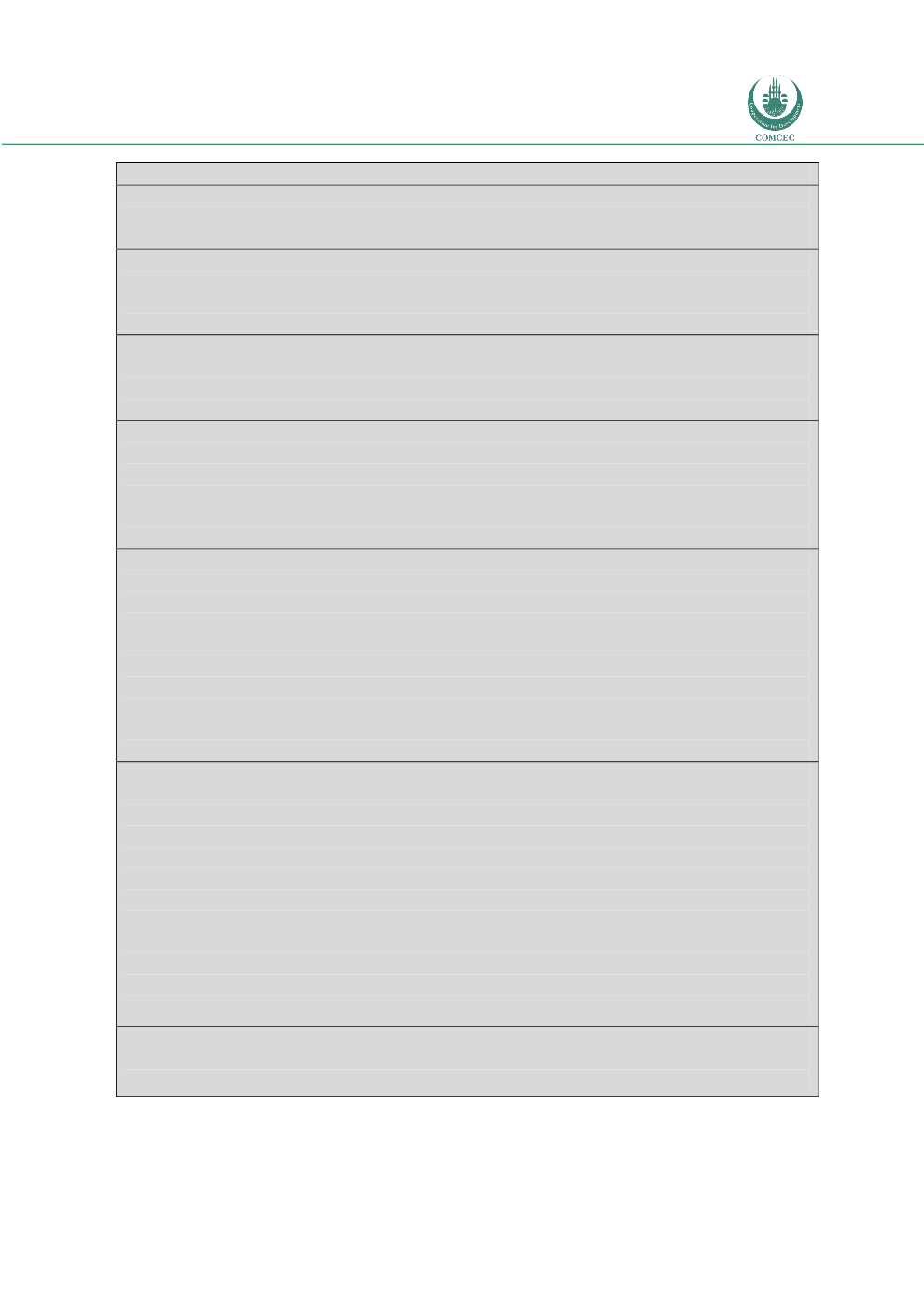

Risk Management in
Islamic Financial Instruments
37
programs.
Islamic NGOs has been managing mainly micro-investment/microcredit programs while
secular NGOs are implementing other programs like non-formal education, health and
sanitation etc. mainly with the financial assistance of external donors.
In microcredit program both groups of NGOs follow the same selection criteria to select their
program beneficiaries. In fact Islamic NGOs are following the existing norms of selecting the
poor people in rural areas. Normally the land ownership criteria such as families having
maximum of 0.5 acres of land included in the programs.
Gender issues: Existing bias among NGOs is to include mostly women in their programs.
Islamic NGOs are including both men and women. However, there are extreme examples
where one Islamic NGO (Islamic Cultural Society), which accept men as members, and Islamic
Bank accepts mainly women like secular NGOs.
Microcredit mechanism: Islamic NGOs have basically copied the microcredit mechanism
developed by the Grameen Bank followed by all NGOs in Bangladesh. However, there might
be small variations introduced by each NGO to suit its own situation. The basic mechanism is
as follows: poor women and men are organized in groups who take responsibility of
repayment of each other’s loan at the event of default. Groups meet once in a week to make
the transactions, deposit savings and loan installments.
One basic requirement for receiving loan is to deposit small amount of money as ‘compulsory
savings’. Islamic NGOs also follow the same procedure because it gives the poor members an
opportunity to mobilize own capital, it’s a kind of cash collateral for the NGO and a part of the
loan/investment operation may be financed by this fund. However, one important distinction
may be noted here regarding payment of interest on members’ deposit. Secular NGOs pay a
fixed rate of interest, 5-6% per annum, on deposit. On the other hand, Islamic NGOs provide
variable rate similar to the Islamic Banks. The rate is computed at the end of the year
considering the total income, deposit and expenses. Normally NGOs do not allow members to
withdraw their savings deposits. In case of Muslim Aid it allows members to withdraw their
savings.
The most significant difference between the Islamic NGOs and other NGOs centers on the
issue of interest. Secular NGOs charge at the rate of 20-30% per annum on the cash credit
provided to the members. However, Islamic NGOs do not provide any cash a loan. They apply
the concept of ‘
Bye Muazzal’
(sale on credit) and provide commodity adding certain percent
of mark-up on the cost of the commodity. The rates vary among the organization. For
example, Islamic Bank adds 12% and Muslim Aid Bangladesh adds 12.5% on the cost over a
period of one year. Since the payments by the members are made every week, when
computed according to the method of Finance the corresponding rate of interest with be
approximately 24% and 25% respectively. The other terms and conditions of credit of these
two groups of NGOs are similar. The loans are given for a period of one year and recovered in
weekly installments. The amount of loan for both groups of NGOs varies between Taka 3000
to Taka 10,000.
The activities financed by both group of NGOs are same, the commonly available petty
activities in the rural areas. Examples are poultry and livestock rearing, petty trade, financing
agricultural inputs, rural vehicles, housing material, handlooms etc.

















